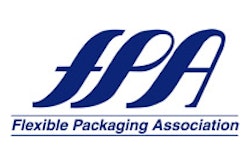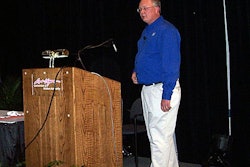This content was written and submitted by the supplier. It has only been modified to comply with this publication’s space and style.
And since the hospital is a short distance from Disney studios, it makes sense that the Center will focus on the body, mind and spirit of its patients.
The $36 million facility will rely on RFID and real-time location systems (RTLS) to achieve many of its patient treatment goals. Those arriving for treatment at the facility will receive passive RFID-enabled name badges to notify hospital staff of their arrival. Aside from helping with patient tracking in the four-story facility, the badges will help the hospital to immediately customize patient treatment rooms.
RFID will help hospital staff to assure that ambiances like room temperature, lighting, and music selections are in place when patients arrive.
“The Disney name connotes a high level of care and service that people expect,” says Raymond Lowe, director of ministry support and IS operations for Providence Health Care Systems, which operates 29 hospitals. “We’re looking to provide a Disney-like experience for some of the sickest patients out there.”
Lowe told a crowd at RFID Journal’s RFID in Healthcare event last week that patient tracking is a real hot button for the hospital, which is using technology from Reva Systems to integrate RFID, RTLS and other technologies being deployed. When complete, RFID will be integrated with phone systems and will allow for desktop messaging, nurse call notification, and for medical staff to view a patient’s location in real time. Lowe expects the entire IT install to be complete by year end, with the system integration the most daunting task.
Lowe told RFID 24-7 that the hospital has ordered about 1000 badges, with the expectation that they will last for three years. Lowe says that the hospital will use many different devices for RFID purposes and a combination of both active and passive RFID. The actual readers will be placed in the main door in order to facilitate greeting of the patient, as well as at various choke points throughout the building, culminating with readers in the linear accelerator doors which, when signaled, will load the patient’s treatment plan. The cancer center is also using 802.11 WAP’s for active RFID to track patients for electronic way-finding and well as staff location identification through the use of its Avaya/Spectralink 802.11 phone system. The entire cost for the technology infrastructure is estimated at $625,000.
“The single most productive feature of RFID is to increase patient satisfaction and reduce the time of their treatment,” says Lowe. “A secondary benefit is to reduce the amount of background noise from overhead paging in keeping with the DFCC philosophy of treating the whole patient - body, mind, and soul.”
Lowe says that his firm is rolling out RTLS at several of its other hospitals, including Kaiser LA Medical Center, where RTLS was first introduced in 2006. Now, more than 2,000 hospital assets there are tracked by using RTLS technology. He says that in order for RTLS to continue to gain ground, the technology must be inexpensive to deploy and must retrofit easily into existing buildings. The potential paybacks are huge, especially when the technology is integrated with enterprise work flow. “There hasn’t been too much talk about this yet,” Lowe says, “but every dollar we spend in our lean Six Sigma program yields $7 in return.”
Hospitals across the nation are finding benefits from RFID and RTLS technology. Kim Carter, director of cardiovascular at UMass Medical Center, says that RFID technology has eliminated about $300,000 in inventory carrying costs alone. The hospital began to implement RFID in its cardiac heart lab in April 2007, tagging items that range in price from $100 to $26,000. Today, all 2,400 products in the lab are tagged, as are the 400 products carried in inventory at the hospital’s electro-physiology lab. The facility utilizes seven catheter/EP procedure rooms and performs 7,000 catheter procedures annually, and another 2,000 EPO procedures.
“We owned 400K of inventory before the RFID system, so that much money was sitting on the hospital shelf,” Carter told RFID in Healthcare attendees. “Now, we have $100,000 of hospital-owned equipment, so our cash tied up in inventory went way down.”
The visibility provided by the RFID system has also helped Carter to determine which products she can order in bulk, and has even helped her to negotiate better prices with vendors. And by knowing when products are approaching their expiration, she can swap them out at no charge to the hospital.
“When a physician needs a product, your answer cannot be that we do not have it,” says Carter. “That can’t happen in a catheter environment.”


























